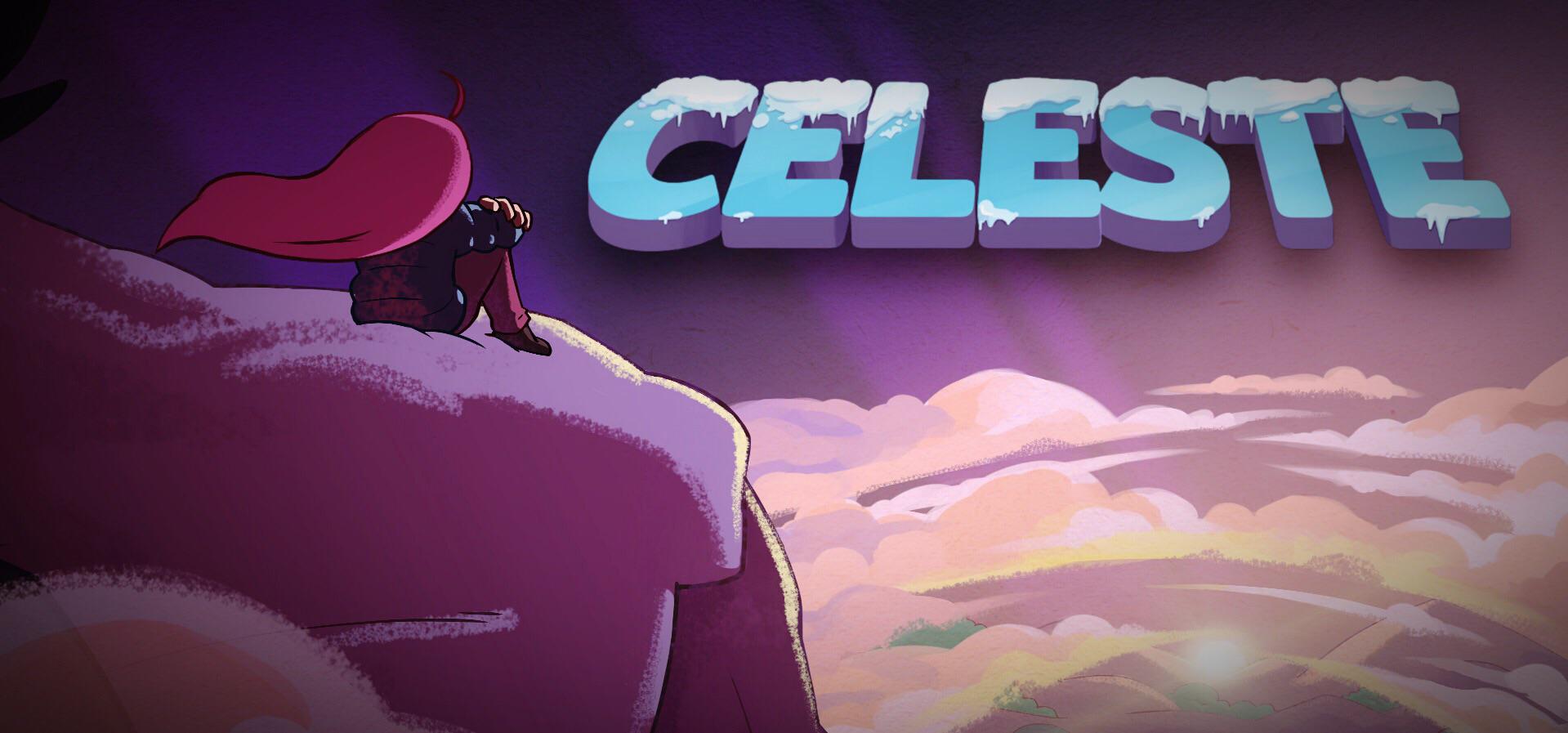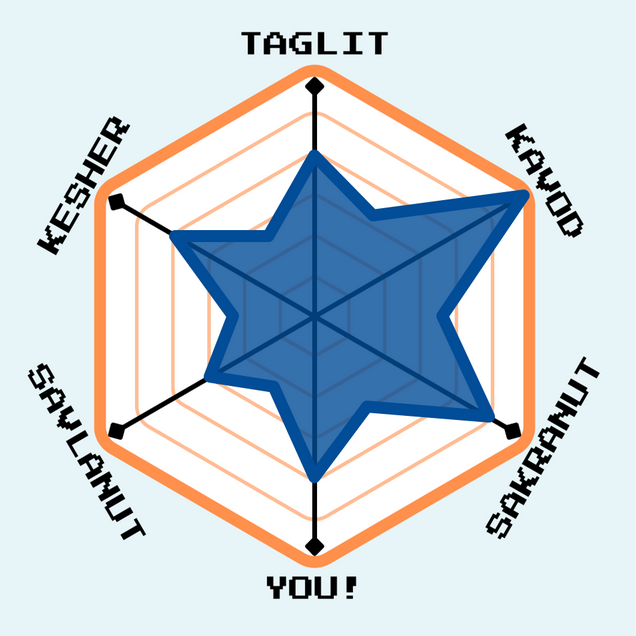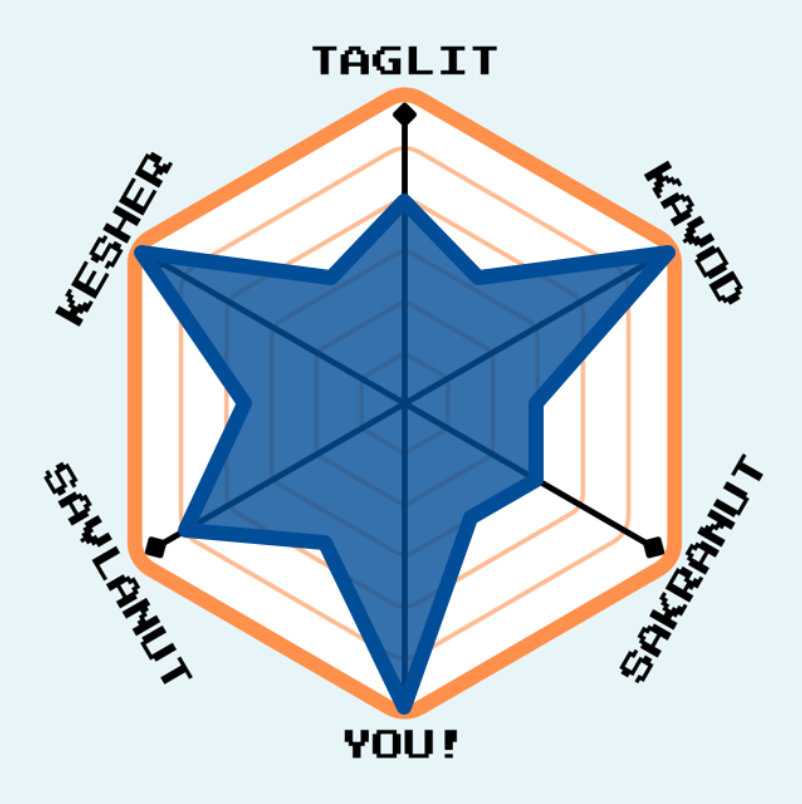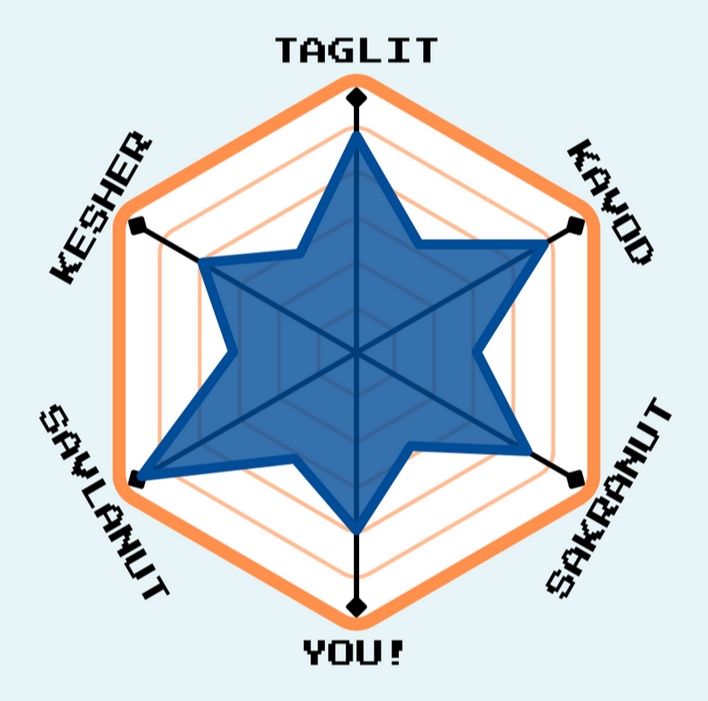
Review written by Isaac Berman
December’s pick for the Sci-Tech Game Club was Celeste! See below for the official Sci-Tech review of this camp favorite, published in 2018 by indie development company, Maddy Makes Games. To learn more about the Sci-Tech Game Club, go to www.6PointsSciTech.org/GameClub/. Our January game is Pyre, an action role-playing sports-inspired video game developed and published by Supergiant Games (who also published award-winning games such as Hades and Transistor)!
Introduction
Celeste is a precision platforming game about a girl named Madeline climbing a mountain. You must overcome tricky platforming challenges with a simple moveset — only a jump, a wall-climb, and a mid-air dash. At the same time, you follow alongside Madeline’s personal struggles as they are externalized by the power of Celeste Mountain. Along the way, you can find optional collectable strawberries and unlock challenging B- and C-sides for the most skilled of players.
Celeste is lauded for its excellent gameplay, exceptional accessibility/assist features, compelling narrative, and representation of Madeline as a transgender woman.
We played Celeste for the Sci-Tech Game Club in December, and we’ll be ranking how it stacks up against our Sci-Tech values. To assess this, we pulled on three different sources: Troy Mundschenk, our Game Design Instructor, Isaac Berman, a camper alum and previous Game Design Instructor, and the opinions of our community (including the Sci-Tech Director team). We rated the game on a scale of 0-6 for each value, with 0 being the lowest end of the scale and 6 being the highest end of the scale. Here we go!

Troy’s Review

Isaac’s Review

Community Aggregate Review
Kavod – How well does the game help you succeed?
Our community rated Celeste very highly in the kavod (respect) category. Two main reasons were the game’s exceptional accessibility options and the ways it was designed to highlight player success above all else.
Celeste’s Assist Mode is unique both in the genre and in games as a whole. It lets players know at the beginning that the game is meant to be a challenge, but that challenge means different things to different people. It freely allows for manipulation of many settings to adjust the game to each player’s skill level and encourages you to try them out without judgement or consequence. Unlike many games with a similar assist mode, Celeste still allows completion of all objectives, including achievements, hammering home the truth behind their sentiment that anybody should be able to play.
But even without enabling Assist Mode, the game is still on your side in every way it can be. Unlike many predecessors, Celeste does not have limited lives or any punishment for dying too often. Respawn checkpoints are available in every single room, and making a mistake will never set you back more than 15 or 30 seconds of gameplay.
Celeste’s character movement also has tons of tiny little features baked into it, all designed to tip the scales in the player’s favor: features like coyote time, corner correction, and input buffering all “cheat” just a little bit to help the player succeed. We won’t go into detail here about how those all work, but the game’s lead designer Maddy Thorson has a wonderful article about it on her website. In her own words, “…everything is fudged a tiny bit in the player’s favor. I think that is a big reason why Celeste can feel kind even though it’s very difficult — it wants you to succeed.”
Kesher – How well does the game help you build or reflect on your relationships with others/yourself?
We saw some mixed opinions about how our value of kesher (connection) might be reflected in the game, but overall, we’ve ended up feeling very positive. Most opinions focused on the narrative aspects of the game, as the story is exactly about Madeline’s relationship with herself. Many players are able to identify closely with her struggles and extrapolate her journey in the game to experiences in their own lives. Players have connected it to struggles with anxiety or depression, relationships, or their own gender identity. Without being overbearing or preachy, Celeste embraces a poignant theme of self-reflection, care, and understanding.
As a single-player game about Madeline’s internal journey, it’s unsurprising that Celeste has a minimal focus on relationships with others. While Madeline’s encounters with Mr. Oshiro, Theo, and Granny can be impactful stories, they aren’t the game’s focus. However, it would be remiss to not mention how Celeste has helped people connect in real life.
Despite not having any online or multiplayer features, the fan community around the game is going strong nearly 7 years after its release. Speedrunners continue to push the boundaries of their ability to beat the game as fast as possible — the current record (held by secureaccount) beats the game in less than 25 minutes. Custom map makers have used the game as a canvas for incredible creativity — there are over 3,000 custom maps uploaded at the time of writing, including collaboration packs like the Strawberry Jam Collab that feature the work of hundreds of designers, programmers, composers, and artists.
The community has also rallied itself to do good in the world, raising thousands of dollars for charity and supporting larger organizations such as Games Done Quick, which use the power of the wider gaming community to raise millions of dollars for charity every year.
Although Celeste’s designers may not have anticipated or planned for this outpouring of community support for this game, many people have found so much community, joy, and support from the game that it’s hard not to mention these aspects.
Savlanut – How well does the game encourage you to take your time?
As a precision platformer, savlanut (patience) isn’t something that we’d normally be thinking much about when playing Celeste. As several of our community responders noted, nothing in the game is explicitly timed (although a speedrun timer that counts up can be optionally enabled), and you can pick up or put down the game at any point without losing your progress. However, many of the more challenging rooms do require quick actions and precise timing. Some areas like Celestial Resort and Core focus on moving platforms that won’t stop to wait for you, and sequences in Old Site, Mirror Temple, and Reflection feature elements directly chasing after that you need to avoid.
Celeste is ultimately a game that requires some physical dexterity. It’s hard to consider this a bad part of the game, but it doesn’t really embody is savlanut at face value.
However, under further investigation we can find that Celeste does reward patience from the player in some less obvious ways. Many rooms in the game require careful planning and thought to get through. The obvious or apparent routes won’t always work for you, and it can almost feel like a puzzle trying to find the proper path. This is absolutely a form of savlanut, and patient players are well rewarded for their time spent planning. On top of that, Celeste is a long and difficult game, and most of your playtime will be spent failing to beat any given room. It takes a level of perseverance to succeed in a game like this, and we find that this too is a way this value can be found in Celeste.
Sakranut – How well does the game allow for exploration and experimentation?
Like patience, sakranut (curiosity) isn’t something that’s evidently one of Celeste’s main strengths. As a 2D platformer, standards of exploration in an open world or sandbox-style experimentation aren’t really an option. Rooms are small and often have only one main exit, and the core path of each level is pretty set.
Within those base restrictions, however, we can actually find a lot of ways the game rewards your curiosity, and many players find these to be the reasons they return to the game time and time again. Strawberries reward exploration from the very start, and most mechanics in the game require some experimentation to fully understand their nuances. Community-made custom maps also open an entire new realm of exploration in the game, with hundreds of maps of any difficulty to play.
Finally, Celeste embodies experimentation with the ways that it affords speedrunning for dedicated players. Some special mechanics are taught in the very hardest levels that allow the player to move much faster, unlocking entirely new ways to play the game altogether. Approaching the game with these tools and a speedrunner’s mindset opens a whole new realm of experimentation as you try to find new ways to beat each room as fast as possible.
Taglit – How well does the game support discovery of new game mechanics or experiences?
This form of taglit (discovery) isn’t really a highlighted part of Celeste, but the parts that are present work very well. The game’s core mechanics—jumping, climbing, and dashing—are all taught during the prologue, and the player never gains any new abilities past that. The unique game elements in each chapter never get explicit tutorials, but there are always simple rooms early on that showcase their behavior before the difficulty really amps up. In this way, Celeste uses minimal tutorials to allow the player to discover what they need to without being too overbearing along the way. Optional challenges including strawberries, B- and C-sides, and the extra chapters 8 and 9 offer ample opportunity for eager players to continue honing their skills, all using the same familiar mechanics in new and more challenging ways.
In a similar vein to what we mentioned in the category above, the way Celeste introduces its speedrun-focused mechanics also supports a smooth learning curve for players to discover. Challenging combinations of the simple moveset are introduced, allowing interested players to reach new speeds and heights. Since these are only introduced at the end of the most challenging content in the game, players only learn them when they’ve reached a level of skill to be able to use them properly. No earlier content in the game requires these moves, but once learned, they can be utilized throughout the rest of the game.
YOU – How well does the game stand out to you personally? Did you like it?
We received a variety of responses to this question on our community poll, and one thing that stood out to us was the different ways in which different people enjoy the game. While some players just didn’t vibe with the genre or difficulty, the reasons to like this game are much more diverse. Reasons that came up include:
- The explicit inclusivity of the Assist Mode options
- The personal impact of the game’s story
- The thrill of challenge of the game’s hardest content or fastest speedruns
- The diversity of community-made modded content
- The friends to be made in the game’s fan community
Final Thoughts
On average, Troy rated Celeste a 4.33, Isaac rated it a 5, and the community (including the Sci-Tech Director team) rated it a 4.62
That means the final Sci-Tech score for Celeste is 4.65!
Thank you so much for reading, and we can’t wait to see your reviews for Pyre! Leave your reviews at www.6PointsSciTech.org/GameClubReview/.
